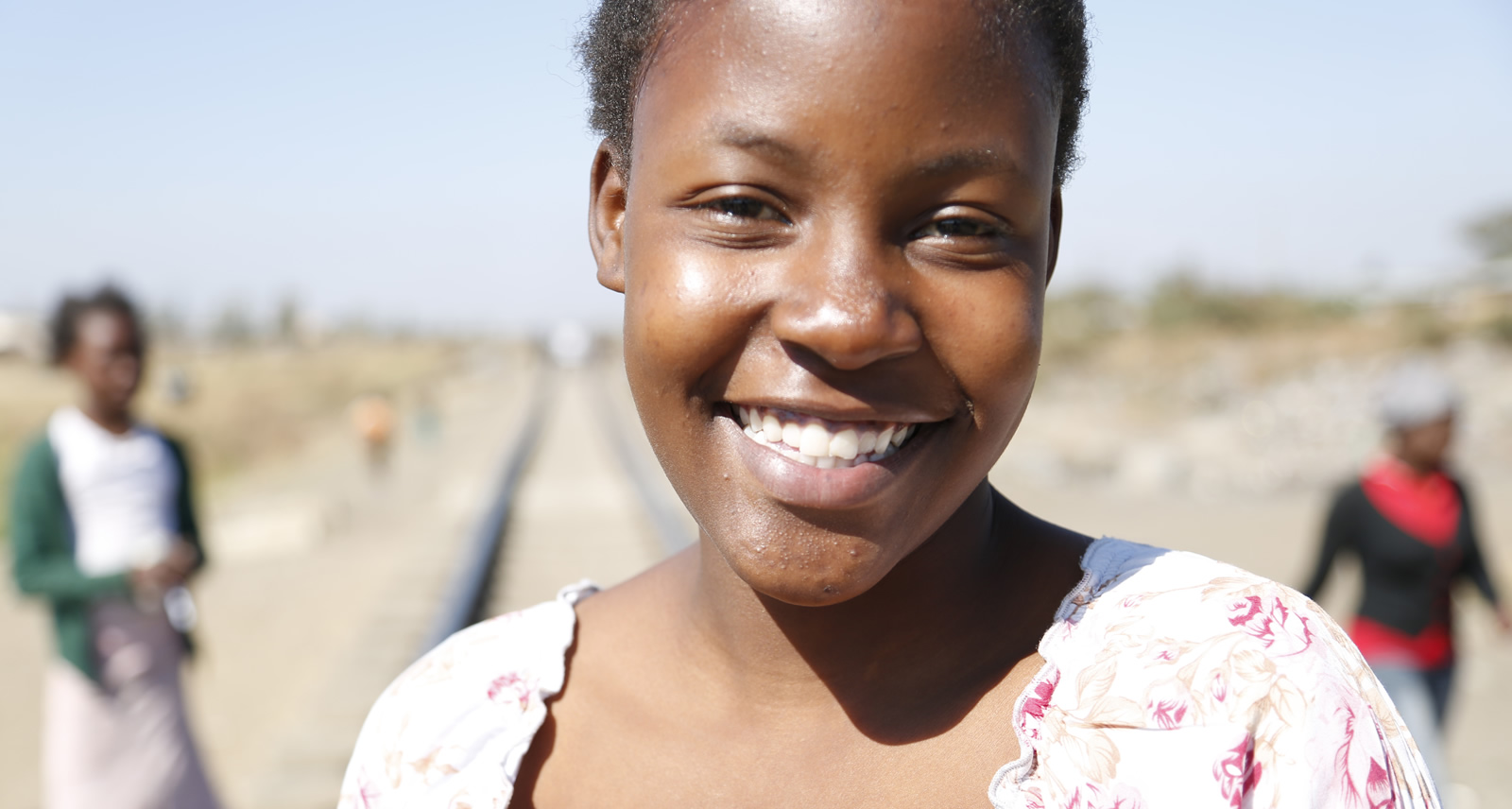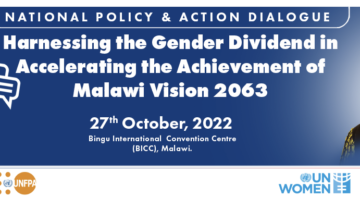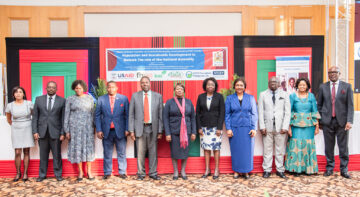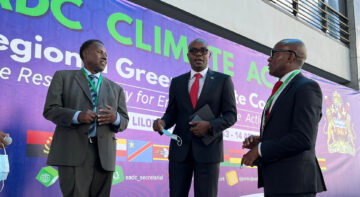News

On 3rd September, 2015, the Ministry of Health launched the new National Adolescent Sexual and Reproductive Health (ASRH) Policy which will replace the 2003 Adolescent and Reproductive Health and Development Policy (ARHD). The new Policy aims to enhance the sexual and reproductive health status of adolescents in Kenya and contribute towards the realisation of their full potential in national development. AFIDEP was a member of the taskforce that developed the Policy and the Institute’s main role was to ensure that evidence played a critical role in the policy development process.
The 2015 Policy takes into consideration the significant changes in the national and international context that have occurred since the development of the 2003 Policy. These changes include the 2010 Constitution of Kenya which recognises reproductive health as a right for all Kenyans as well as changes in the demographic, social, economic and technology environment. In addition, there is heightened national political attention on youth development enshrined in the country’s Vision 2030 and a dedicated directorate focusing on youth.
The 2015 Policy was also developed in light of documented implementation challenges of the 2003 Policy including: inadequate leadership; inadequate resources; lack of political will; delayed development of a Plan of Action for the Policy; inadequate dissemination of both the Policy and Plan of Action; poor coordination of implementing partners; low stakeholder and youth involvement in formulation of the Policy; and cultural and religious barriers.
These considerations have led to a number of major differences and shifts but also similarities between the two Policies as follows:
- Change in lead policy development institution. Formulation of the 2015 Policy was led by the Reproductive and Maternal Health Services Unit (RMHSU) of the Ministry of Health whereas the 2003 Policy was led by the National Council for Population and Development (NCPD). As noted earlier, limited leadership was documented as an implementation challenge of the 2003 Policy. An in-depth analysis of the 2003 Policy by Oronje (2013)[1],[2] found that, as a Division in the Ministry of Health, the Reproductive and Maternal Health Services Unit (formerly the Division of Reproductive Health) experiences a lot of political interference. During the development of the 2003 Policy adolescent sexual and reproductive health was highly politicised. As a result, the Division of Reproductive Health shied away from taking a leadership role on the development of the Policy. On the other hand, NCPD was not as susceptible to strong political interference due to its institutional status as a semi-autonomous government agency. NCPD was therefore at the time, best placed to play a lead role in this highly politicised issue.
- Inadequate data and evidence on adolescents sexual and reproductive health. Evidence played a central role in the development of the two Policies. The 2015 Policy benefited from availability of evidence on a wider range of issues because there has been more research on adolescent sexual and reproductive health over the past decade. However, inadequate or lack of evidence on some issues continued to be a challenge. For instance, there’s lack of evidence on the adolescent maternal mortality and on the sexual and reproductive health of marginalized and vulnerable adolescents including young adolescents aged 10-15 years, adolescents living with HIV and those living with disabilities.
- Improvement in the political context for adolescent sexual and reproductive health. While the sexual and reproductive health of adolescents remains a politicised issue, the political context improved when HIV/AIDs was declared a national disaster in 1999. The context improved further when subsequent new governments keen on expanding the political democratic space and promoting human rights were ushered into power from 2002 to the present.
- Shift in focus of the Policy. The 2015 Policy focuses on just the sexual and reproductive health needs of adolescents whereas the 2003 Policy addressed the reproductive health as well as the other broader development issues affecting adolescents and youth. This is mainly due to the shift in the lead policy development institution from NCPD to RMHSU noted earlier. NCPD has the broad mandate of implementing population and development policies to promote sustainable development in Kenya while RMHSU has the specific mandate of addressing reproductive, and maternal and neonatal health issues in Kenya.
- Shift in target population to focus on adolescents. The 2015 Policy addresses the sexual and reproductive health needs of young people aged 10-19 years (defined as adolescents by the World Health Organization), whereas the 2003 Policy addressed the reproductive health and development issues affecting young people aged 10-24 years.
- Explicit mention of sexuality education and contraceptives. The 2015 Policy emphasises increased access to the age-appropriate comprehensive sexuality education, contraceptive education and a wide range of contraceptive methods. On the other hand, the 2003 Policy promoted the integration of adolescent sexual and reproductive health education into the curricula of all education and training institutions, but failed to mention important concepts such as comprehensive sexuality, life skills, family life, education, or contraceptives.
- Wider stakeholder engagement. There were concerted efforts to include perspectives of young people and human rights groups in the development of the 2015 Policy relative to the 2003 Policy. According to Oronje 2013, during the development of the 2003 Policy, there was no input from a notable local organisation that mobilised young people in advocating for their needs and interests in the 2003 Policy. Neither was their involvement of a notable organisation focused on advocating for adolescent SRH rights such as FIDA-Kenya and the Kenya Human Rights Commission. On the other hand, during the development of the 2015 Policy, FIDA-Kenya was a member of the Task Force that developed the policy. In addition, consultations were held with a sample of adolescents from across the country to obtain their views on priority issues to address in the policy.
- Persistent lack of mention of safe abortion. Similar to the 2003 Policy, safe abortion is not mentioned in the 2015 Policy as it remains a highly contested issue in Kenya even though it is legal in some circumstances. Men having sex with men is mentioned as a key population but specific strategies for addressing their needs are stated under the broad category of vulnerable and marginalised adolescents. However, this is a positive shift from the 2003 Policy which completely left out homosexuality.
Kenya’s new Adolescent Sexual and Reproductive Health Policy therefore reveals some progress in the political context for adolescent sexual and reproductive health but also persistent challenges that call for continued efforts to overcome them.
[1] Oronje, R.N. (2013). Understanding the drivers of change in sexual and reproductive health policy and legislation in Kenya. Unpublished PhD thesis. Institute of Development Studies, University of Sussex. – See more at: http://sro.sussex.ac.uk/46469/1/Oronje,_Rose_Ndakala.pdf
[2] Oronje, R. N. (2013). The kenyan national response to internationally agreed sexual and reproductive health and rights goals: A case study of three policies. Reproductive Health Matters, 21(42), 151″160. doi:10.1016/S0968-8080(13)42749-0
Related Posts





